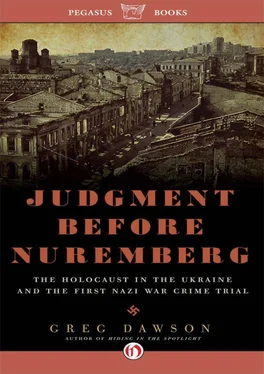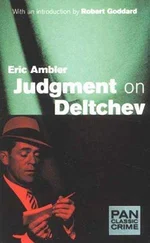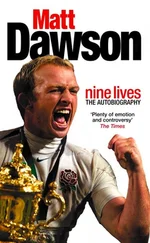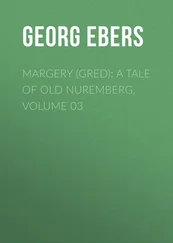In our small Orlando neighborhood of people smarter than me, Ted may be the smartest. He is a retired military man who tutors honors students headed for elite colleges. He does Soduku in his sleep, is a voracious reader, and would be my first pick when choosing teams for a neighborhood Jeopardy tournament. If Ted is confused about Ukraine, I decided, the general public is in deep trouble. This was final confirmation of a realization that had dawned on me in the course of my experience promoting Hiding in the Spotlight .
While there usually, but not always, were exceptions in every room, what I found was that even these reasonably well-informed Americans could not come within a thousand miles of finding Ukraine on an unmarked map. In part, you can blame America’s historic obliviousness to the rest of the world, separated as we are from most of it by two oceans. Our splendid isolation and relatively secure borders have made us blithely geo-phobic (and arrogantly monolingual). No doubt there are many other places Americans can’t find on that unmarked map.
But Ukraine poses a special challenge because of its history. For those of us who grew up in the fifties and sixties, Ukraine for all practical purposes did not exist. It was invisible—a neat trick for a place nearly the size of Texas. There was only the enormous and forbidding Soviet Union, which most people including our teachers referred to as Russia. We had no more idea—probably less—that the Soviet Union was made up of republics such as the Ukraine and Belarus and Azerbaijan than an average Soviet student did that America was a collection of states like Idaho and Arkansas and Delaware.
In this monolithic yet nebulous “Russia” there was Moscow, and everything else was “Siberia” (thank you, Doctor Zhivago ). Cold War rhetoric deepened our confusion by making the “the Iron Curtain countries”—Rumania, Czechoslovakia, Hungary, et al.—synonymous with the Soviet Union, as if they, too, were part of “Russia.” So, given nearly a half century of misinformation and missed information, I was surprised but not shocked when Ted guessed that Ukraine was somewhere east of the Ural Mountains, where Siberia starts and unknown lands begin.
I was just as disoriented before writing my mother’s story. She spoke often about “Russia” when I was growing up, but I recall almost no mention of Ukraine. Her persona is best described as a proud Russian who happened to have been born in Ukraine—rather like the slogan “American by birth, Southern by the grace of God” found on bumper stickers. Her self-identifying as Russian is natural since the Ukraine was a dot in the vast pointillist tapestry of the Russian Empire long before the Soviet Union in which she came of age, and did not become its own country until 1991—fifty years after she was ripped from the arms of her Mother Russia by the Nazis. The first research I did for the book was to get out a map and find my mother’s hometown of Berdyansk on the Sea of Azov in southeastern Ukraine, just north of the Black Sea. She spent her middle childhood before the war in Kharkov in northeast Ukraine, 420 miles due south of Moscow, nowhere near the Arctic Circle. Old impressions die hard. When I told friends I was going to Ukraine in December 2010, they gave me the “Siberia” look, but Chicago and New York certainly had much tougher winters.
As puzzling as it is, Ukraine’s geographic location is a day at a Black Sea beach next to its political history, a stupefying phantasmagoria of cultures, influences, princes, and nations stretching back to the ninth century and the Kievan Rus, a precursor to the Russian Empire, which for a time in the eleventh century was the largest state in Europe, with Kiev as the capital. For Ukraine as much as any place on Earth, situated at the intersection of Europe, Russia, and Asia, geography has been destiny—eternally traversed, invaded, settled, and abandoned. I’ve seen no better capsule biography of Ukraine than this from George Friedman, CEO of Stratfor, a Texas-based geopolitical think tank, who has written extensively about the country where his grandfather was born:
“The name ‘Ukraine’ literally translates as ‘on the edge.’ It is a country on the edge of other countries, sometimes part of one, sometimes part of another, and more frequently divided. In the seventeenth and eighteenth centuries it was divided among Russia, Poland, and the Ottoman Empire. In the nineteenth century it was divided between Russia and Austria-Hungary. And in the twentieth century, save for a short period of independence after World War I, it became part of the Soviet Union. Ukraine has been on the edge of empires for centuries.” [1] George Friedman, “Does Ukraine Really Want to be Sovereign Nation?”, Kyiv Post (December 3, 2010), 5.
Such constant fluctuation is difficult to fathom for Americans who grew up in states with borders which have never changed and never been breached by a foreign army. In our lifetime, Ukraine’s longest period of geographic and political “stability”—some might call it arrested development—was as a captive republic of the Soviet Union. After the implosion of the USSR in 1991, the Ukraine declared independence, ditched the “the” and became, simply, Ukraine. At the same time it was gaining independence, Ukraine was regaining its stolen identity after years of anonymity as a Soviet cipher.
Many Americans probably first took notice while watching the opening ceremonies of the 1994 Winter Olympics in Lillehammer, Norway. The tortoise-paced procession of costumed delegations with their distinctive national flags has traditionally served as a handy, color-coded refresher course on the rest of the world for American TV viewers every four years (every two since the winter and summer games were staggered). For half a century the Cold War was fought on the playing fields and ice rinks of the Olympics. We became accustomed to the sight of the vast Soviet delegation marching stolidly into the stadium under the red hammer and sickle, then soaking up a lion’s share of medals during the games. Disappearance of the Soviet “team” was dramatic visible proof to Americans that the Cold War was over. Ukraine marched under its own blue-and-gold flag for the first time at Lillehammer. A decade later in the winter of 2004–05, the famously short American attention span was riveted by the spectacle of the Orange Revolution in Independence Square in Kiev, even if the average viewer did not know Yushchenko from Yanukovych.
One price of independence for Ukraine has been the revival—or continuation—of an ancient identity crisis. Ukraine can still be found at the intersection of gravitational forces, pondering its fate. As Friedman notes, the western third leans toward Europe, the eastern third toward Russia, and the remaining third in the center is pulled in both directions, with Kiev the capital of indecision. Should it tilt west and join the European Union? Or pay homage to its historic ties to Russia, so intimate and intertwined as to be familial?
“There are endless arguments over whether Ukraine created Russia or vice versa,” Friedman wrote. “Suffice it to say, they developed together.” And it seems they are destined to move forward together, separate yet indivisible like separated Siamese twins. Meanwhile, as Ukraine is pulled east and west into the future, it is subject to another powerful gravitational force—the past.
Before leaving Orlando for Ukraine, I made the acquaintance online of Victor Melikhov, a seventy-year-old Ukrainian who teaches English to university students in Kharkov. Ukrainian history is Victor’s hobby. In Kharkov we met at my hotel for pots of tea and a mini-seminar in his favorite subject. Is life better for him in independent Ukraine than it was in the Soviet Union?
Читать дальше












